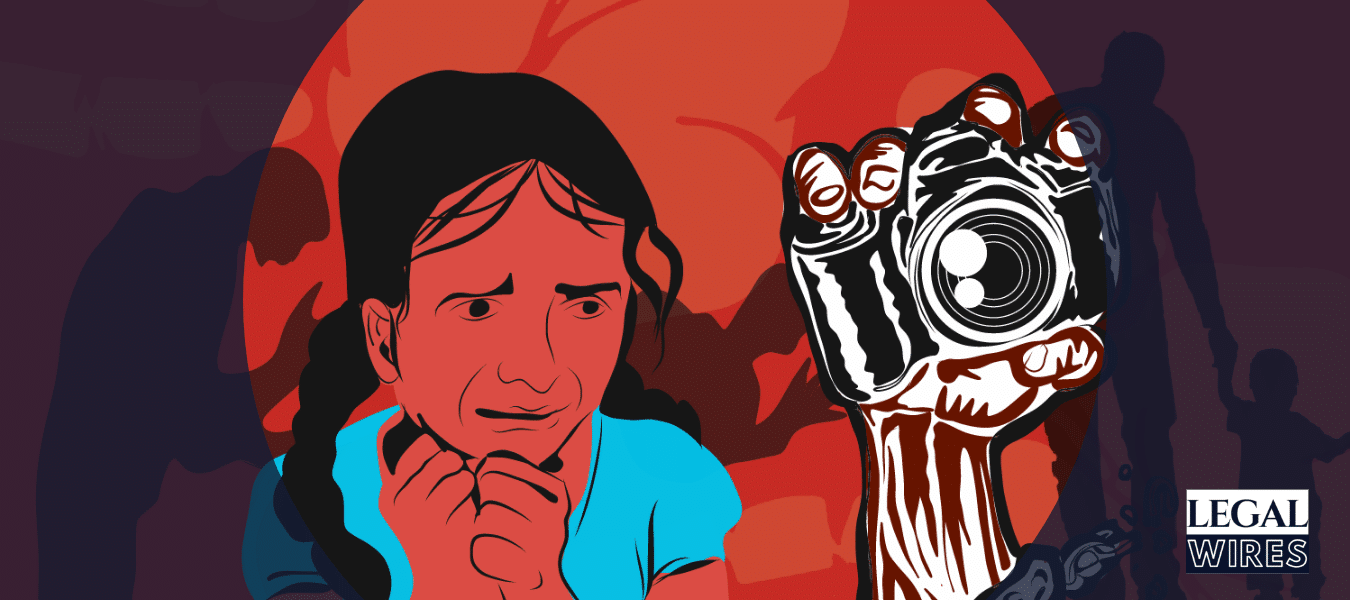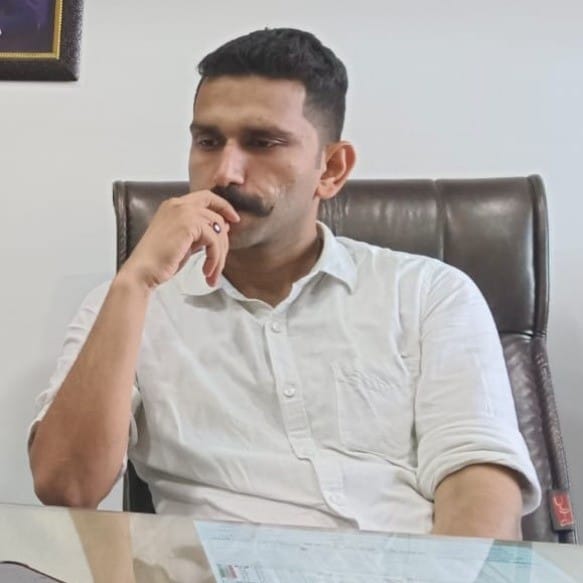Under Indian law, we were unable to define child pornography for a long time. Earlier, child pornography was taken in reference to Sec 293 of IPC, 1860, but that is totally disparate from what it actually means.

In the last three months, our country has seen a lot of hesitance. Many things have diminished like the economy, human dignity; while India has seen a rise in unemployment, corona cases, and child pornography search. According to a report of Delhi based NGO, India Child Protection Fund, traffic on Pornhub (world’s largest porn site) from India increased by 95% between 24th and 26th March 2020.[1] This shows a grisly side of Indians leisure activity in which they indulge when they are unrestricted. Such an increase in porn search is also a concern for children security also as demand for child pornography (or Child sexual abuse material) was an average of five million per month in 100 cities that only on the public web leaving aside the dark web in 2019.[2]
In the lockdown, children are more prone to child sexual abuse materials or grooming through online means. Within 11 days of lockdown, ‘The Childline India Helpline’ received around 92,000 SOS calls for help regarding abuse and violence which is around 50% increment.[3] The situation is critical as in the technological world the predators could not be easily identified and the children are easily accessible by all kind of paedophiles. As the demand for online education has increased, more children are accessing online resources which makes them more vulnerable. Above presented data suffice the point for the guardians to understand the structure of child pornography and take preventive measures to save their child.
Child pornography
The concept of obscenity evolved in the 20th century and this provided the base for child pornography (or pornography in general) discussion. In Miller v. California[4], US federal court, defines obscenity on the basis of contemporary community standards. Furthering the principle given in Miller case, US federal court, in New York v. Ferber[5], differentiated between obscenity and child pornography. They completely banned child pornography stating that it is not protected by first amendment.[6]
The phase of 1980s saw many developments regarding child rights, the ultimate being the Convention on the Rights of the Child[7]. It obliges the state parties to take national, bilateral and multilateral measures to prevent the exploitation of use of children in pornographic and materials.[8]
However, the convention of 1989 did not specify the exact meaning of child pornography. So, there were dissimilar approaches to tackle this crime by different states. With the end of the 20th century, the internet has taken a prominent place in society. Therefore, there was a need for a definitive meaning of child pornography which was provided by UN General Assembly resolution of 2001, which defined as child pornography as, “any representation, by whatever means, of a child engaged in real or simulated explicit sexual activities or any representation of the sexual parts of a child for primarily sexual purposes.”[9]
India’s stance towards Child pornography
Under Indian law, we were unable to define child pornography for a long time. Earlier, child pornography was taken in reference to Sec 293 of IPC, 1860, but that is totally disparate from what it actually means. Sec 293 of IPC, 1860, covers selling, hiring, distributing, exhibiting, circulating obscene material to a young person below 20 years. It does not talk about engagement in any kind of sexually explicit activity. It fails on two grounds, firstly, it has a wider scope as it covers “obscene objects” and not “child sexual abuse material”; secondly, there are some technical and procedural defaults such as showing indecent pictures to minors is not covered[10] or like there is a burden of proof on the prosecution to prove that victim is minor[11].
So, there was a requirement of special law regarding protection of children from CSAM (Child sexual abuse material) which was fulfilled by the coming of IT Act, 2000. IT Act, 2000 contains a separate provision in the form of Sec 67B which covers material depicting children in sexually explicit act, etc. in electronic form, and convicts anyone who,
- Publishes or transmits or causes to be published or transmitted, or
- Creates texts or digital images, collects, seeks, browses, downloads, advertises, promotes, exchanges or distributes, or
- Cultivates, entices, or induces, children to online relationship with one or more children, or
- Facilitates abusing children online, or
- Records in any electronic form own abuse or that of others pertaining to sexually explicit act with children.
Sec 67B of IT Act, 2000 brought significant changes and made certain acts like browsing and keeping child pornography punishable. It also added a new concept of grooming within its ambit, in which predators try to make friendly relationship with victim and try to influence before abusing them.
But the word child pornography or CSAM was nowhere defined in the IT ACT, 2000. This result in Sec 67B being taken as the definition of child pornography in India. In 2012, The Prevention of children from sexual offences (POCSO) came with an objective to protect the children from pornography. Sec 13 of POCSO Act, 2012, punishes using child for sexual gratification (either personal or for distribution) if it includes;
- Representation of sexual organs of a child, or
- Usage of child in sexual acts (real or stimulated), or
- Indecent or obscene representation of a child.
The POCSO Act, 2012 is a unique act formulated to control sexual harassment of children and works extensively for child protection and formation of special court. However, till now it was also not able to define child pornography. Recently, Sec 2(da) has been added which define child pornography as,
“any visual depiction of sexually explicit conduct involving a child which include photograph, video, digital or computer-generated image indistinguishable from an actual child, and image created, adapted, or modified, but appear to depict a child”[12]
Difference between Sec 67B of IT Act, 2000 and Sec 13 of POCSO Act, 2012
Both the above said provisions tackle the child pornography crime having many similarities as certain terms like facilitate, publish, transmit, distribute, create or produce are common to both. But there are some variations in both as Sec 67B of IT Act, 2000 uses words like “any electric form”[13] or “online”[14] which confine its limit to the virtual world; on the other hand, Sec 13 of POCSO Act, 2012 covers “any form of media” either being offline or online which were earlier not covered by Sec 293 of IPC, 1860.
Similarly, Sec 13 of POCSO Act, 2012 use the words “use a child”[15] this signifies that direct harm is to be related to the child to cover under this act whereas Sec 67B of IT Act, 2000 does not use any such term and increases its ambit to indirect harm to the child also.
Pseudo child pornography is used to identify those materials where adults are depicted as a child, so prima facie no child is directly harmed. Sec 67B of IT Act, 2000 uses the word “depicting children”[16] which covers the concept of pseudo child pornography, but such a term is missing from Sec 13 of POCSO Act, 2012 which restricts its application to pseudo child pornography. However, after the coming of POCSO (Amendment) Act, 2019 this problem, has been resolved as a definition of child pornography includes the words “appear to depict a child”[17].
Moreover, Sec 67B of IT Act, 2000 covers the concept of online grooming[18] as a preventive measure of abuse which could be nowhere found in the POCSO Act, 2012. The usage of words like “for the purpose of sexual gratification” in the Sec 13 of POCSO Act, 2012 has limited the scope of POCSO Act, 2012 to a particular purpose in reference to IT Act, 2000. Sexual gratification, in general, is associated with satisfaction of sexual desires, on the contrary, “sexually explicit” is related to sexual content without deliberately obscuring or censoring it.
Problems on the way
The common problem that lies in tackling any cyber crime is the liability of the intermediaries. Sec 79 of IT Act, 2000 provides exemption to the liability of the intermediaries, if;
- Function of the intermediary is limited to providing access to the communication system, or
- If it does not initiate the transmission, select the receiver, and modify the information, or
- If it observes due diligence performing its duties.
However, such exemption is not provided, if the intermediary has aided or induced or conspired or abetted; or upon receiving information does not remove the material. Any kind of active participation on the part of intermediary leads to revocation of the exemptions provided under Sec 79 of IT Act, 2000.[19]
But such kind of generalized exemption of liability could not be accepted in cases of child pornography as it is a grave crime in which no lacuna could be left. Web is a big space where surveillance by state is not possible, so in spite of relying on the government to restrict at data or material, the intermediaries should be diligent enough act themselves. To curb this, recently certain recommendations were given by the Rajya Sabha Committee in January, 2020 which increases the liability of the intermediaries. According to the given recommendations, the IT (Intermediary Guidelines) Rules 2011 should be amended to include after Section 12, the following provision:
- Intermediaries shall be responsible for all measures to pro-actively identify and remove Child Sexual Abuse Material (CSAM) as well as report it to Indian authorities under the National Cybercrime Portal. Gateway ISPs must bear a significant liability to detect and block CSAM websites.
- Intermediaries shall also be responsible to report to the designated authority IP addresses / identities of all those searching/ accessing child porn/ CSAM keywords.
- All search engines must ensure that CSAM websites are blocked during the search and should be obligated to report any website along with gateway ISPs to the appropriate authority.[20]
Another problem is the involvement of children in the process of production or circulation of CSAM, could be easily termed as the problem of selfies and sexting. Suppose a girl of 15 years sent a selfie of herself (containing indecent content) to her friend of same age, can the be prosecuted under child pornography. What would be the stand of law at that point? The Rajya Sabha Committee has tried to resolve this matter also by recommending insertion of clause after Sec 15(3) in POCSO Act, 2012, which provides;
(4) Exceptions under this Act include (a) minors who cannot be prosecuted for child pornography offences if the child takes or stores or exchanges with another minor, indecent images of oneself; (b) if the individual is under 18 years and (i) no person in the image is more than two years younger than the individual; (ii) the image does not show an act that is a serious criminal offence.[21]
Under the new POCSO Rules, 2020, the intermediaries have the responsibility to report the matter of violation of law and necessary material including the source.[22]
Next problem, is regarding the application of laws in matter of child pornography as we have two major laws covering the area, one is the IT Act, 2000 and the other one be the POCSO Act, 2012. In the case of violation of child right, confusion prevails as to which law is to be applied. There is variance in punitive measures of the two acts. IT Act, 2000 provides for a fine of maximum 10 lakhs and imprisonment up to 7 years (for subsequent conduct), whereas, POCSO Act, 2012 provides imprisonment for minimum of 7 years (for subsequent conduct) and in certain cases to life imprisonment as well as death penalty but no specification about fine.[23]
Progressive approach of the government
In the past one year many progressive steps have been taken by the government regarding the control on child pornography. First one is the POCSO (Amendment) Act, 2019 which provided the definition of child pornography and amended the penal provision making them more stringent. Earlier under POCSO Act, 2019 storing of child pornography was punished only when done for commercial purpose, but now, after amendment it is also extended to non- commercial purposes.
Another major progress is done by the Rajya Sabha Ad- Hoc Committee under Chairmanship of Jairam Ramesh, which provides following recommendations regarding issue of pornography in social media;[24]
- Inclusion of cyber- grooming under Sec 11 of the POCSO Act, 2012.
- Further expanding the definition of cyber pornography by including audio recording and specific upper age 18.
- Any material depicting a child in the company of any person indulging in sexual activity to be covered under the definition of child pornography.
- Providing exemption to minors regarding sexting and selfies under Sec15 of POCSO Act, 2012.
- Providing safeguard to individuals who store CSAM for the purpose of reporting under Sec 15 of the POCSO Act, 2012.
- Increasing the liability of intermediaries as to report and provide IP addresses to track down the CSAM.
- Allowing NGOs/ individuals to investigate sites with the permission of the nodal agency.
- Mandatory apps on mobiles to monitor children’s access to pornographic content.
- Permit to break end to end encryption to trace distributors of CSAM.
- Partner with blockchain companies to track cryptocurrency transactions.
- Providing guidelines for social media sites.
- Create a national nodal agency to combat child pornography.
- Increase international co-ordination to combat child pornography.
- Appointment of state-level e-safety commissioners.
- Strengthening data collection and reporting mechanism.
Conclusion
A disease could be cured only when we recognize that we have one. Similar is the case with child pornography. For decades we try to dodge this topic but it keeps on re- surfacing, sometimes in form of Nithari killings[25] or Sunil Rastogi[26]. We were neglecting the truth that our society is full of paedophiles and this possess a threat to our children. The NCRB data is silent about the child pornography cases or their conviction. According to a report of private institution, National Centre for Missing and Exploited Children (NCMEC), last year 1.6 crores cases of CSAM upload was reported out of which 19.87 lakhs reports were from India. This makes India topmost in the world in uploading CSAM. The condition is more severe as 36.87 lakhs reports were from India, Pakistan and Bangladesh collectively, making this South Asian region the hub of CSAM uploading.[27]
The lockdown has worsened these conditions as children are spending more time online and accessing different sites out of boredom. This raises an alarm for the parents as well as government to prepare themselves to safeguard the unprotected. The government policies and development have been on the progressive side in regards to CSAM but in India where we lack behind is the proper implementation of policies. Moreover, parents should also understand their responsibility and put parental control over the children access to internet.
A proper transparent channel is to be developed for data transmission between sender, receiver and the intermediary. Intermediaries are the nerves that need to be checked to control any kind of crime over the virtual space.
[1] India Child Protection Fund, “Child sexual abuse material in India” 5 (2020).
[2] Id. at 3.
[3] “Coronavirus lockdown | Govt. helpline receives 92,000 calls on child abuse and violence in 11 days”, The Hindu, April 08, 2020, available at this SOURCE. (last visited on June 11, 2020).
[4] 314 U.S. 15 (1972).
[5] 458 U.S. 747 (1982).
[6] Monique Mattei Ferraro, Eoghan Casey, et.al., Investigating Child exploitation and pornography: The internet, the law and forensic science, 27 (Elsevier Academic Press, 2005).
[7] Adopted and opened for signature, ratification and accession by General Assembly resolution 44/25 of 20 November 1989 (entry into force 2 September 1990), in accordance with article 49.
[8] The Convention on the Rights of the Child, 1989, art. 34.
[9] UN General Assembly, Optional protocols to the Convention on the Rights of the Child on the involvement of children in armed conflict and on the sale of children, child prostitution and child pornography, UN Doc A/RES/54/263 (16 March 2001).
[10] Md. Musa Ansari v. The State of Bihar (2015) Cr. Ap. (SJ) No. 308 of 2013.
[11] State of Karnataka v. Faiz Ahmed (2016).
[12] The Protection of Children from Sexual Offences (Amendment) Act, 2019 (No. 25 of 2019).
[13] The IT Act, 2000 (No. 21 of 2000), s. 67B(a).
[14] Id., s. 67B(d).
[15] The POCSO Act, 2012 (No. 32 of 2012), Sec 13 Explanation.
[16] Supra note 13, s. 67B(b).
[17] The POCSO (Amendment) Act, 2019, Sec 2(da).
[18] Supra note 13, s. 67B(c).
[19] Christian Louboutin Sas v. Nakul Bajaj & Ors. [CS (Comm) 344/2018].
[20] Report of the Ad-hoc Committee in the Rajya Sabha to study the alarming issue of pornography on social media and its effect on children and society as a whole (Submitted to Chairman, Rajya Sabha on 25 January, 2020). [21] Ibid.
[22] The POCSO Rules, 2020, Rule 11.
[23] The POCSO (Amendment) Act (No. 25 of 2019), Substituted s. 15.
[24] Supra note 20.
[25] Peeyush Khandelwal, “Nithari killings: Surinder Koli given death penalty in 10th case”, Hindustan Times, 03 Mar 2019, available at this Source. (last visited on 13 June 2020).
[26] Somreet Bhattacharya, “Sunil Rastogi linked to 58 cases of child abuse”, The Times of India, 18 Jan 2017, available at this SOURCE. (last visited on 13 June, 2020).
[27] Ramya Kannan, “Most online content on child sexual abuse from India”, The Hindu, 18 April 2020, available at this SOURCE. (last visited on 13 June, 2020).



